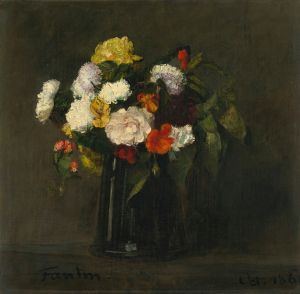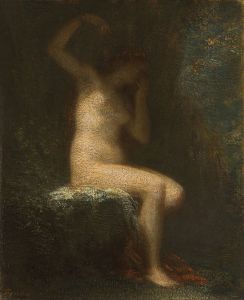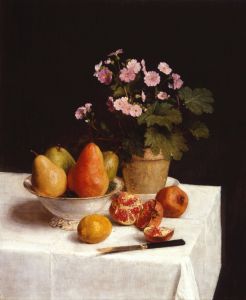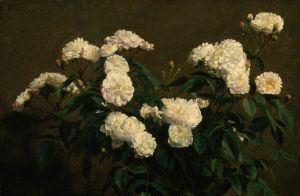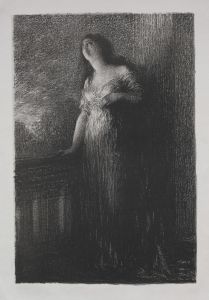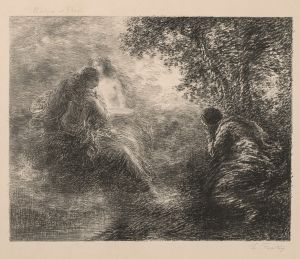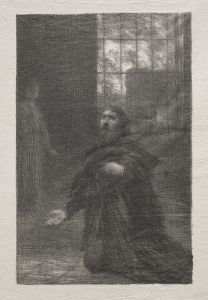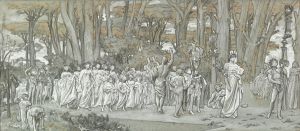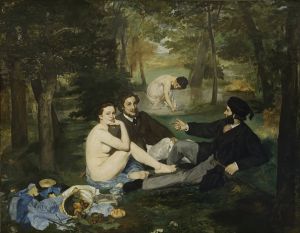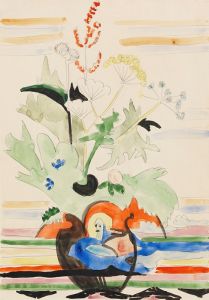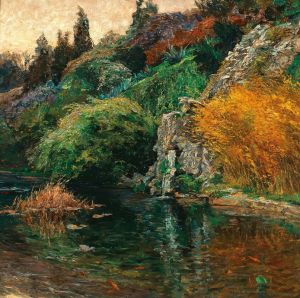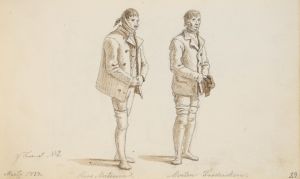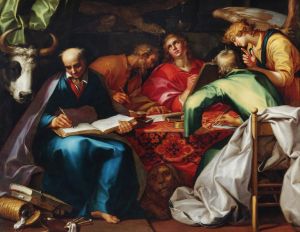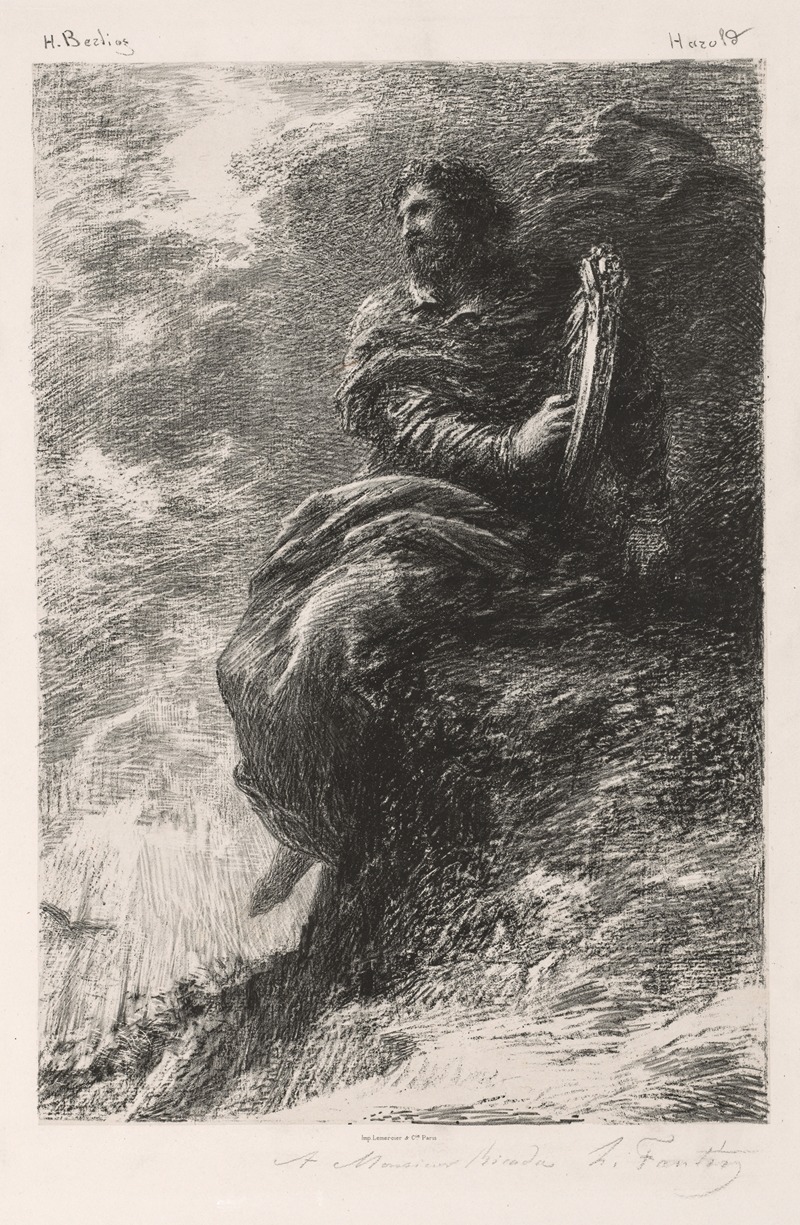
Harolde dans les Montagnes
A hand-painted replica of Henri Fantin-Latour’s masterpiece Harolde dans les Montagnes, meticulously crafted by professional artists to capture the true essence of the original. Each piece is created with museum-quality canvas and rare mineral pigments, carefully painted by experienced artists with delicate brushstrokes and rich, layered colors to perfectly recreate the texture of the original artwork. Unlike machine-printed reproductions, this hand-painted version brings the painting to life, infused with the artist’s emotions and skill in every stroke. Whether for personal collection or home decoration, it instantly elevates the artistic atmosphere of any space.
Henri Fantin-Latour, a renowned French painter known for his still lifes and group portraits, created the painting "Harolde dans les Montagnes" in 1861. This work is part of Fantin-Latour's exploration of literary themes, which he often depicted with a sense of romanticism and introspection. The painting is inspired by the character of Childe Harold from Lord Byron's narrative poem "Childe Harold's Pilgrimage," which was published between 1812 and 1818. Byron's poem follows the travels and reflections of a young man disillusioned with the world, capturing the spirit of the Romantic era.
"Harolde dans les Montagnes" reflects Fantin-Latour's interest in the intersection of literature and visual art. The painting portrays the character Harold amidst a mountainous landscape, embodying the themes of solitude and contemplation that are central to Byron's work. Fantin-Latour's choice to depict Harold in the mountains aligns with the Romantic fascination with nature as a source of inspiration and introspection. The landscape serves as both a physical and metaphorical backdrop, emphasizing the character's internal journey and the sublime beauty of the natural world.
Fantin-Latour's style in this painting is characterized by a subdued palette and a focus on mood rather than intricate detail. The use of soft, muted colors and gentle brushwork creates an atmosphere of tranquility and introspection. This approach is typical of Fantin-Latour's work, which often emphasizes emotion and mood over precise realism. The painting's composition, with Harold positioned prominently against the expansive landscape, draws the viewer's attention to the character's solitary figure and the vastness of the natural world surrounding him.
Henri Fantin-Latour was part of a circle of artists and intellectuals in Paris during the mid-19th century, which included figures such as Édouard Manet and James McNeill Whistler. Although he is best known for his still life paintings and portraits, Fantin-Latour's works inspired by literature reveal his deep engagement with the cultural and intellectual currents of his time. His paintings often reflect a synthesis of visual art and literary themes, showcasing his ability to translate the emotional depth of written works into visual form.
"Harolde dans les Montagnes" is an example of Fantin-Latour's ability to capture the essence of Romantic literature through his art. By choosing to depict a character from Byron's poem, Fantin-Latour aligns himself with the Romantic tradition, which emphasized individualism, emotion, and the sublime beauty of nature. The painting invites viewers to reflect on the themes of solitude, introspection, and the search for meaning, which are central to both Byron's poem and the broader Romantic movement.
Today, Henri Fantin-Latour's works are celebrated for their emotional depth and technical skill. "Harolde dans les Montagnes" remains a testament to his ability to bridge the worlds of literature and visual art, capturing the spirit of an era defined by its fascination with the inner workings of the human soul and the transcendent power of nature.





